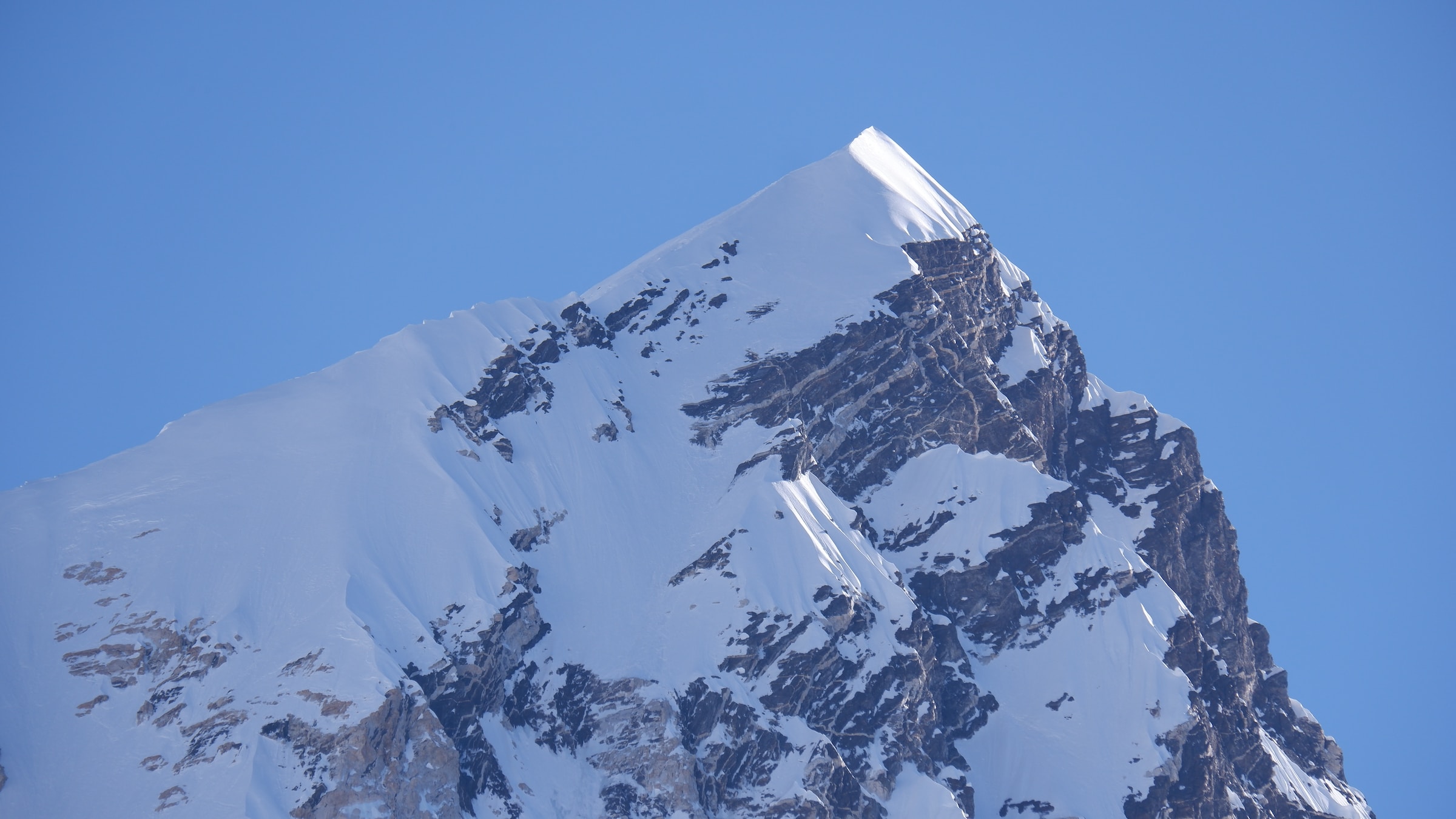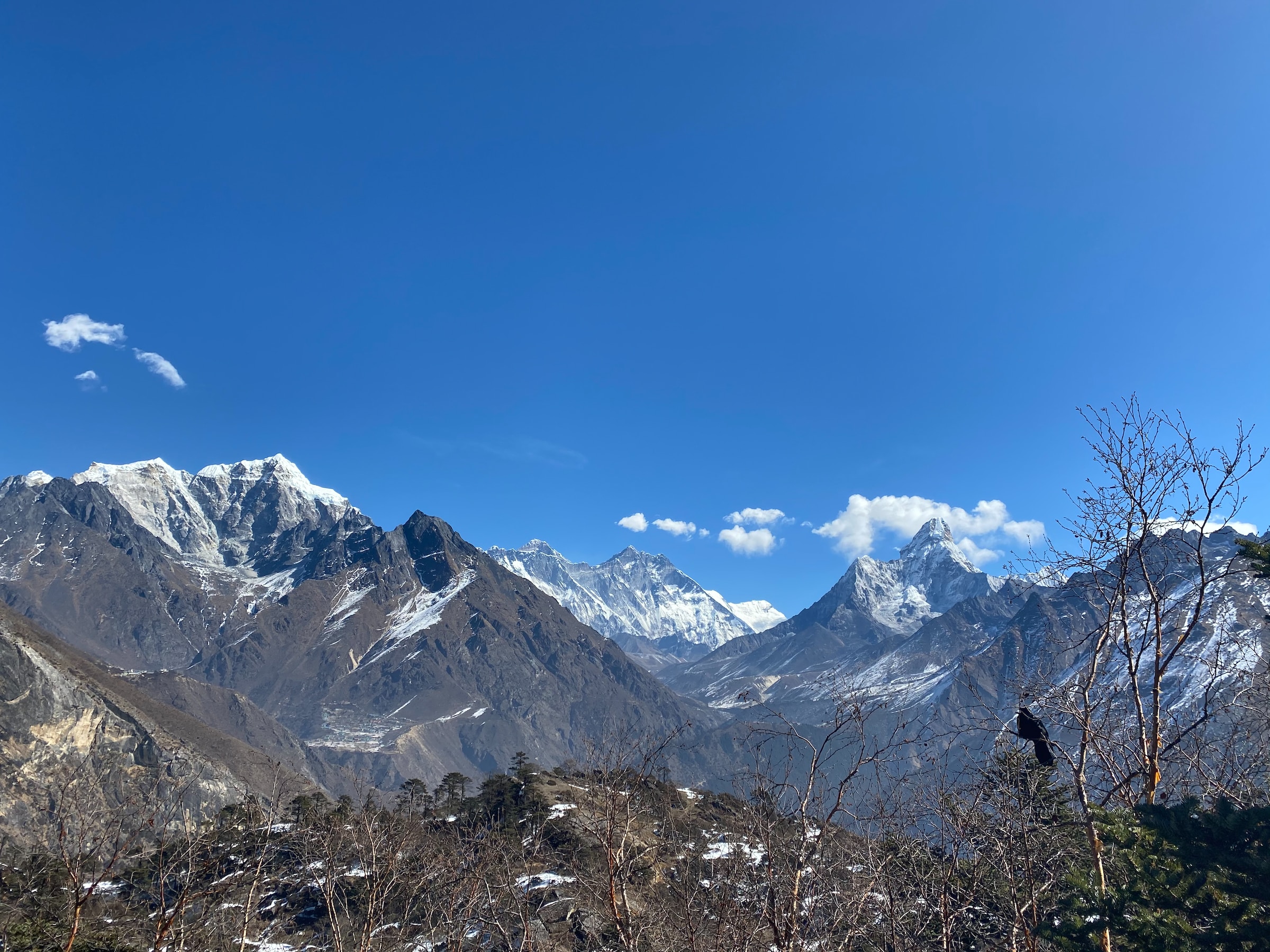Altitude
Altitude is one of the major challenges on the EBC Trek. Since the trails on the trek to EBC lies in high Himalayan regions, trekkers should specifically be careful of the issues and effects of such high altitude on their mind and body.
This can be demanding, especially for those who have never reached those heights before.
The starting point of the trek i.e. Lukla is at a height of 2840 meters. From here, it is a slow journey up to reach the Everest Base Camp at 5364 meters. The highest point of the trek is at Kalapatthar at a height of 5545 meters.
Similarly, the trails on the trek are available in a variety of easy-going ones including icy glacial moraines. The trails ascend and descend swiftly which also poses significant challenges along with the high altitude.
Thus, the trekkers need to be extra careful on the Everest Base Camp Trek.
The high air pressure and the low oxygen percentage can bring on problems like AMS (Acute Mountain Sickness) if the body is not given enough time to acclimatize and get used to the environment of the Himalayas.
Trekkers should be cautious to maintain a slow and steady pace when doing the EBC Trek. Therefore, resting and acclimatization are key to the EBC Trek. In the meantime,
if trekker does come across any problems, they must immediately inform their trek leader and travel partners.

Trekking Duration and Length
The number of days one takes to reach the Everest Base Camp also affects the difficulty of the trip. Always keep in mind that slow and steady wins the race. Besides, rushing to reach the top only spoils the adventure.
You will be travelling a total distance of around 130km on foot. Likewise, you will cover a vertical distance of around 2500 meters.
The trekking route does not follow a steady incline. Rather, you will trek around the hills and the mountains to make your trek more levelled and easy. As such, the trekking route is graded moderate so it is not that exhausting for even beginners.
The length of the trek can depend upon the trekking hours. While beginners should take it slow, and trek for around 6-7 hours per day. Likewise, seasoned veterans can choose to cover more distance and trek for around 8-9 hours.
Thus, experience comes in handy if you want to complete the EBC Trek in a relatively lesser amount of time.
However, not overexerting yourself is the key while trekking. Trying to cross more distances than your body can handle just to reach the destination faster will, in the end, spoil the whole trip.
You will have a sore body each day and it also brings on chances of Acute Mountain Sickness (AMS). Don’t challenge yourself too much that you don’t even reach the top and have to return due to exhaustion.
Overall, the trek is fairly moderate for people who enjoy the trip and take their sweet time to reach the Everest Base Camp. The keyword is; patience.

Training and Preparation
A certain level of fitness is required to travel a distance of 130km. If you are a novice climber or you have not participated in trekking activities before then you will need some training to prepare you for the trek.
Firstly, you need to have strong legs and calf muscles to retain the grip on the ground as the trail consists of numerous steep ascents and descents. Squats and Lunges can do the trick for strengthening your legs at home.
As you will have to trek for almost 10km or more every day on the trek. At least make sure that your body can handle the burden by going through proper training. Running is the most helpful training exercise to tone your legs. Running for 15-20 minutes every day can help you build your legs to make your trek easier.
Likewise, a gym membership can take you a long way in your training and preparation. Try lifting weights, slowly increasing the weight as you get used to the smaller ones.
Pilates and yoga can also be useful in increasing your core strength as well as building up your leg muscles.
All this training and preparation will help you develop your physical condition for the Everest Base Camp Trek. Having both physical fitness and mental fortitude will surely assist you on the trip.

Suiting and Gearing Up
The trekking gear that you decide to take on your trip along with the clothes you wear can help you a lot on your trip. So, you need to be mindful of what you are bringing to the trip and if it is helpful or not.
The first thing to take note of while preparing your trekking gear is to make your bag as light as possible. Carrying your weight at higher altitudes along with a heavy bag full of unnecessary items will exhaust you.
Make the clothes you are wearing light and warm, preferably cotton. It is difficult to know exactly when it will snow in the higher mountains so make sure to pack waterproof clothes like a waterproof jacket and pants. Likewise, you should wear warm and comfortable layers at all times to avoid hypothermia and frostbite.
Proper hiking boots with a strong grip and good quality can help you immensely on your trip. Make sure to wear warm inner wears to preserve your body heat and protect you from the rough climate.
A proper water bottle can come in handy because water is not always available in these places. Having a portable water purifier is also essential to make sure that you only consume pure drinking water.
Do not forget a small first aid kit with all the necessary medicine and supplies along with your medicinal kit. Your prescribed medicines may not be available in higher altitudes as there is a shortage of medicine so, make sure you have enough dosage before you continue with the trip.
.jpg)
The Timing
Your experience on the trek depends on what month you travel on. Nepal experiences four climates spring, autumn, winter, and summer, which can affect the difficulty of the trip.
Autumn starts from September to November. It is the best time to trek to the Everest Base Camp as the air is warmer and the temperature is moderate. There are fewer chances of bad weather so you will be able to see an unobstructed view of the mountains.
From March to May is spring which is also a good time to travel because the roads are dry and less slippery. Likewise, the flora is in full bloom during this time making the trip easy and exciting.
The rhododendron forests along with a variety of other flowers and plants help create mesmerizing trekking trails.
Winter at the higher altitude is gruelling because of temperatures below 0 degrees Celsius. At the Everest Base Camp, the temperature can reach up to -20 degrees. Likewise, even most of the teahouses and lodges in higher altitudes are closed until the temperature begins to drop.
The season to avoid completely is summer and monsoon (June to August) as it brings along dangers like an avalanche.
The path along the forests is usually slippery during the monsoon because of the heavy rainfall and the trip can also be less enjoyable because of constant rain.
The flights are also most prone to be delayed and cancelled during the monsoon because of constant rainfall which can be a nuisance on your trip. Even the winter season sees frequent flight delays and cancellations due to unpredictable weather conditions.
Thus, it is important to plan the Everest Base Camp Trek carefully. You can enjoy your trek with the beautiful nature of Nepal and along the glistening mountains without facing any adversities.

Conclusion
Finally accessing the mentioned conditions and planning your trek can decrease the difficulty of the trek drastically leaving you only with memories you will never forget. You can look forward to being among the huge snow-cloud mountains at the Everest Base Camp. Enjoy the magnificent panoramic view of Mt. Everest (8848m) with all its glory and the glistening peaks surrounding it.





.jpg)

